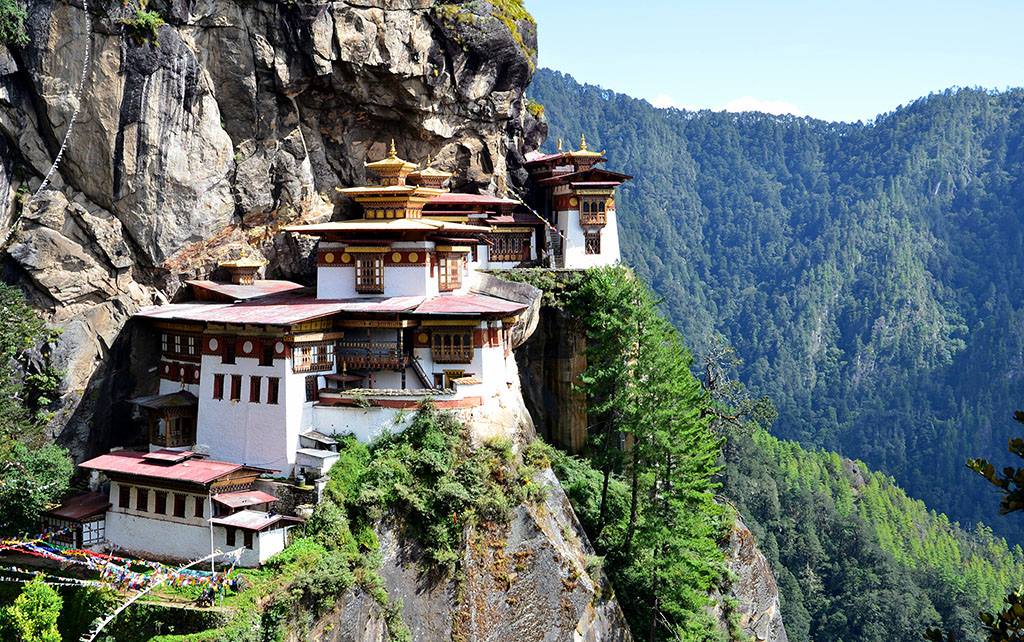PARO

<p style="margin-top: 0in; background-image: initial; background-position: initial; background-size: initial; background-repeat: initial; background-attachment: initial; background-origin: initial; background-clip: initial;"><span style="font-size: 10.5pt; font-family: "Segoe UI", "sans-serif";">Located at an altitude of
about 2280, the Paro Valley is the first place where visitors who take a Druk
Air flight encounter. The breathtaking view of the valley is seen from the
flight in a clear sky; even the regular visitors’ thirst to see this view is
never quenched.<o:p></o:p></span></p><p style="margin-top: 0in; background-image: initial; background-position: initial; background-size: initial; background-repeat: initial; background-attachment: initial; background-origin: initial; background-clip: initial;"><b><span style="font-size: 10.5pt; font-family: "Segoe UI", "sans-serif";">Places of Interest</span></b><span style="font-size: 10.5pt; font-family: "Segoe UI", "sans-serif";"><o:p></o:p></span></p><p style="margin-top: 0in; background-image: initial; background-position: initial; background-size: initial; background-repeat: initial; background-attachment: initial; background-origin: initial; background-clip: initial;"><b><span style="font-size: 10.5pt; font-family: "Segoe UI", "sans-serif";">Taksang Monastery</span></b><span style="font-size: 10.5pt; font-family: "Segoe UI", "sans-serif";"><o:p></o:p></span></p><p style="margin-top: 0in; background-image: initial; background-position: initial; background-size: initial; background-repeat: initial; background-attachment: initial; background-origin: initial; background-clip: initial;"><span style="font-size: 10.5pt; font-family: "Segoe UI", "sans-serif";">Taktshang or Tiger's nest is the most well-known monastery in
Bhutan floating on a high cliff. Legend has it that Guru Rinpoche, who brought
Buddhism to Bhutan in the eighth century flew to a cave in Taktshang spot on a
tigress and mediated for three months. The trek to the monastery and back takes
about four hours.<o:p></o:p></span></p><p style="margin-top: 0in; background-image: initial; background-position: initial; background-size: initial; background-repeat: initial; background-attachment: initial; background-origin: initial; background-clip: initial;"><b><span style="font-size: 10.5pt; font-family: "Segoe UI", "sans-serif";">Drukgyel Dzong</span></b><span style="font-size: 10.5pt; font-family: "Segoe UI", "sans-serif";"><o:p></o:p></span></p><p style="margin-top: 0in; background-image: initial; background-position: initial; background-size: initial; background-repeat: initial; background-attachment: initial; background-origin: initial; background-clip: initial;"><span style="font-size: 10.5pt; font-family: "Segoe UI", "sans-serif";">Drukgyel Dzong is 14 kilometres from the Paro town. Also known
as the fortress of victory, Drukgyel Dzong was built by Shabdrung Ngawang
Namgyal in 1649 to commemorate the victory over Tibetan invaders in 1644.<o:p></o:p></span></p><p style="margin-top: 0in; background-image: initial; background-position: initial; background-size: initial; background-repeat: initial; background-attachment: initial; background-origin: initial; background-clip: initial;"><b><span style="font-size: 10.5pt; font-family: "Segoe UI", "sans-serif";">Paro Dzong</span></b><span style="font-size: 10.5pt; font-family: "Segoe UI", "sans-serif";"><o:p></o:p></span></p><p style="margin-top: 0in; background-image: initial; background-position: initial; background-size: initial; background-repeat: initial; background-attachment: initial; background-origin: initial; background-clip: initial;"><span style="font-size: 10.5pt; font-family: "Segoe UI", "sans-serif";">Paro Dzong is also called the Rinchen Phug Dzong, which means
fortress on a heap of Jewels. It is one of the most notable and celebrated
dzongs of Bhutan and was built in 1646 by Shabdrung Ngawang Namgyal on the old
foundation, which was built by Guru Rimpoche.<o:p></o:p></span></p><p style="margin-top: 0in; background-image: initial; background-position: initial; background-size: initial; background-repeat: initial; background-attachment: initial; background-origin: initial; background-clip: initial;"><b><span style="font-size: 10.5pt; font-family: "Segoe UI", "sans-serif";">National Museum</span></b><span style="font-size: 10.5pt; font-family: "Segoe UI", "sans-serif";"><o:p></o:p></span></p><p style="margin-top: 0in; background-image: initial; background-position: initial; background-size: initial; background-repeat: initial; background-attachment: initial; background-origin: initial; background-clip: initial;"><span style="font-size: 10.5pt; font-family: "Segoe UI", "sans-serif";">The National Museum is housed in the Ta-Dzong which was built in
1656 and served as the watch tower of Paro Dzong in the past. The museum
displays the ancient Bhutanese arts, crafts and weapons.<o:p></o:p></span></p><p>
</p><p class="MsoNormal"><o:p> </o:p></p>

